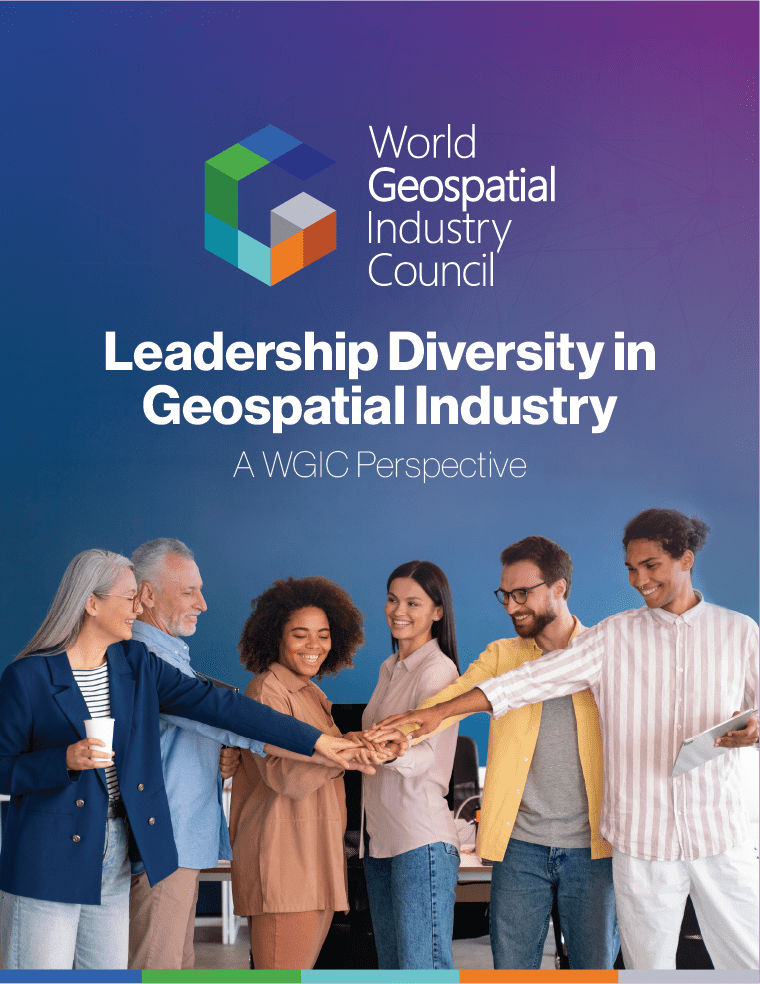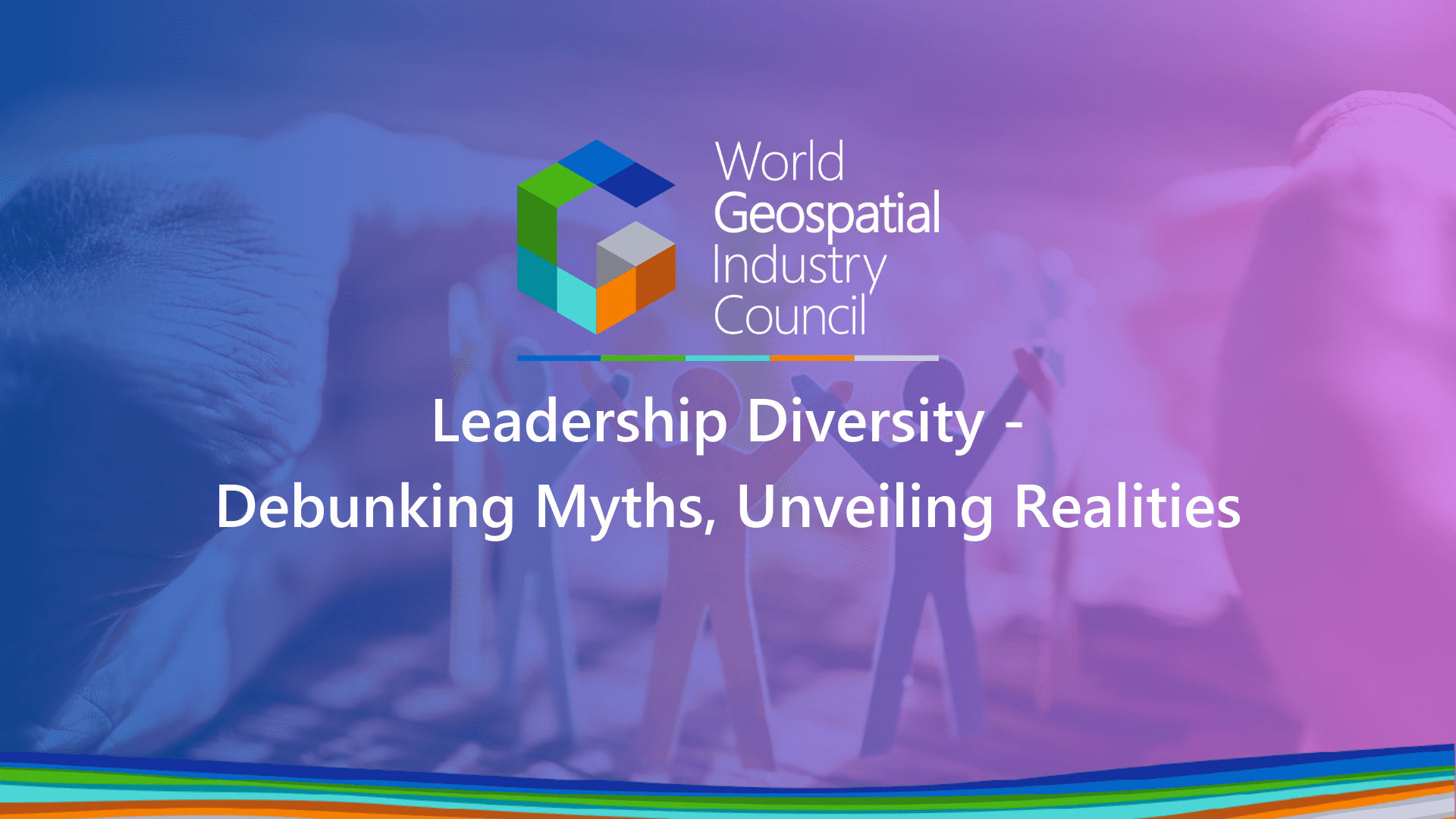In corporate leadership, particularly in a dynamic field as the geospatial industry, diversity is often shrouded in myths and misconceptions. Some laud it as a remedy for all organizational challenges, while others dismiss it as mere window-dressing or a transient trend.
The essence of effective leadership, however, lies in wholeheartedly embracing diversity, not merely as a nod to political correctness but as a catalyst for innovation, and problem-solving. The World Geospatial Industry Council (WGIC)’s policy report titled “Leadership Diversity in the Geospatial Industry: A WGIC Perspective,” discerns the real impact of diversity in leadership — separating myths from facts and illuminates how this diversity, in all its beauty and strength, is a critical component in driving forward-thinking, inclusive, and successful organizations. Moving past the buzzwords and the rhetoric, let us examine what the evidence indicates.
The Myth of Homogeneous Efficiency
A pervasive myth in geospatial industry is that homogeneity in leadership equates to efficiency. This perception stems from the idea that similar backgrounds and viewpoints naturally lead to quicker decision-making and reduced conflict. However, the reality is far more nuanced and dynamic. Diverse leadership, as demonstrated by WGIC member companies such as Autodesk, doesn’t merely add variety for the sake of it; it significantly boosts innovation, enhances problem-solving capabilities, and ultimately drives superior financial performance.
Diverse leadership teams bring a plethora of ideas and approaches, propelling companies to explore uncharted territories and solve complex problems more creatively and effectively. In debunking this myth, we realize that the friction and varied perspectives of a diverse leadership team are not hindrances but valuable assets that lead to more thoughtful, innovative, and robust decisions.
Beyond the ‘Tick Box’: Diversity as Strategy
Many critics view diversity initiatives as superficial—a mere tick in the box for public image or compliance with regulations. The myth persists that companies pursue diversity primarily for brand enhancement or to fulfill corporate social responsibility commitments, rather than as a substantive and integral part of their long-term strategy. However, forward-thinking organizations recognize that true diversity is far more than a peripheral concern or a public relations maneuver. It is a strategic imperative that is central to sustained growth, relevance, and competitive advantage.
Esri India’s and EVONA’s approach to diversity, leading to significant recognition such as the WGIC DEI Trailblazer 2022 and the 2023 Corporate Impact Award, respectively, exemplifies that diversity is not merely an add-on but a central tenet of successful business strategy.
Similarly, Oracle, another WGIC member, embodies this ethic by integrating diversity into its business model. These practices underscore the importance of diversity in enhancing a richness of perspectives, driving innovation, and developing products and solutions that resonate with a global and diverse customer base. It’s clear that for these industry leaders, diversity in teams and leadership is a strategic imperative, integral to their ongoing success and industry leadership.
Meritocracy and Diversity: Complementary Forces
One of the contentious myths is that prioritizing diversity undermines meritocracy. Critics argue that diversity initiatives lower standards to meet the pre-set quotas. And that favoring demographic and gender considerations over true talent and expertise compromises the quality of leadership.
Yet WGIC member companies such as Planet demonstrate that diversity and meritocracy are, in fact, complementary. By expanding their search for talent, these organizations find that diversity enhances rather than compromises the quality of leadership. Actively seeking diverse candidates doesn’t lower standards but rather broadens the talent pool to include a variety of qualified and skilled leaders.
Far from diluting meritocracy, embracing diversity in leadership roles enriches it. It allows companies to break free from unconscious biases and limited networks, ensuring a dynamic and capable leadership team. Planet’s experience and other WGIC member companies’ continuous efforts in promoting DEI in teams and leadership show that with a committed approach, diversity can coexist with and even enhance meritocratic values. This approach will eventually lead to more robust decision-making, innovation, and financial success.
The Multifaceted Benefits of Diversity
Understanding diversity in leadership isn’t about settling for one perspective over another; it is about recognizing and embracing its multifaceted benefits. By embracing a varied leadership team, companies can navigate the complex, interconnected world more effectively and responsively. It enhances the organization’s ability to understand and meet the needs of a diverse clientele, innovate in response to a wide range of challenges, and cultivate a rich, dynamic corporate culture that attracts top talent from all walks of life. As we persist in debunking outdated myths and fostering a more informed perspective, the tangible benefits of diversity in leadership become increasingly clear.
Moving Forward: From Perception to Reality
WGIC’s policy report on leadership diversity provides valuable insights and actionable strategies to foster diversity in the geospatial industry. Diversity isn’t a one-time action, it requires continuous efforts from all layers of society. It involves broadening recruitment horizons to encompass a wider range of talent, cultivating an inclusive culture where everyone feels valued and empowered to contribute, and ensuring transparency and accountability in diversity initiatives. Organizations and individuals alike must play a role in this transformative journey, committing to a process of lifelong learning, reflection, and proactive engagement with the principles of diversity and inclusion.
Your Role in Shaping the Future
Don’t let the conversation end here. Dive into the WGIC report to gain a deeper understanding of the nuances, challenges, and strategies for enhancing diversity in leadership. Discover its relevance for you or your organization in tackling diversity issues. It’s not just a report; it’s a roadmap to a more diverse, inclusive, and equitable future. Your voice and actions can make a significant difference.

Leadership Diversity in Geospatial Industry A WGIC Perspective
The report underscores the imperative of diversity in organizational leadership, deriving wisdom from the WGIC DEI Committee and dialogues within the WGIC membership. Providing in-depth insight into diversity, it catalyzes discussions for fostering an inclusive leadership culture in the geospatial sector.



